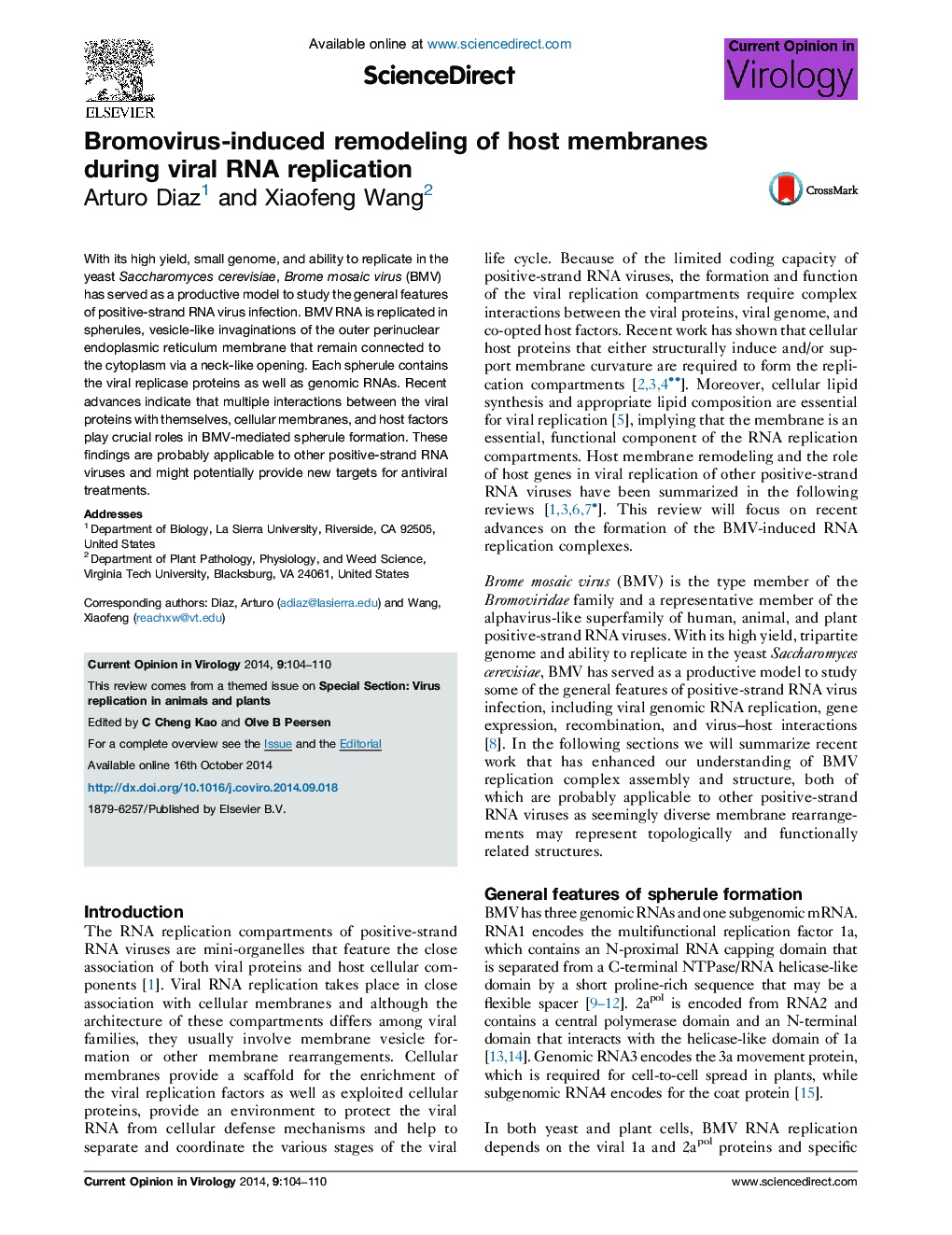| Article ID | Journal | Published Year | Pages | File Type |
|---|---|---|---|---|
| 2473329 | Current Opinion in Virology | 2014 | 7 Pages |
•BMV RNA synthesis occurs on perinuclear ER membranes in ∼70 nm vesicular invaginations known as spherules.•Spherules contain the viral replicase proteins 1a and 2apol, host factors, and newly synthesized BMV RNAs.•Induction of BMV spherules requires 1a's multimerization and membrane association via an amphipathic α-helix.•Proper spherule formation requires the action of host genes that regulate lipid metabolism and membrane remodeling.•Various ER membrane-associated vesicular structures are formed in Bromoviruses-infected plants.
With its high yield, small genome, and ability to replicate in the yeast Saccharomyces cerevisiae, Brome mosaic virus (BMV) has served as a productive model to study the general features of positive-strand RNA virus infection. BMV RNA is replicated in spherules, vesicle-like invaginations of the outer perinuclear endoplasmic reticulum membrane that remain connected to the cytoplasm via a neck-like opening. Each spherule contains the viral replicase proteins as well as genomic RNAs. Recent advances indicate that multiple interactions between the viral proteins with themselves, cellular membranes, and host factors play crucial roles in BMV-mediated spherule formation. These findings are probably applicable to other positive-strand RNA viruses and might potentially provide new targets for antiviral treatments.
